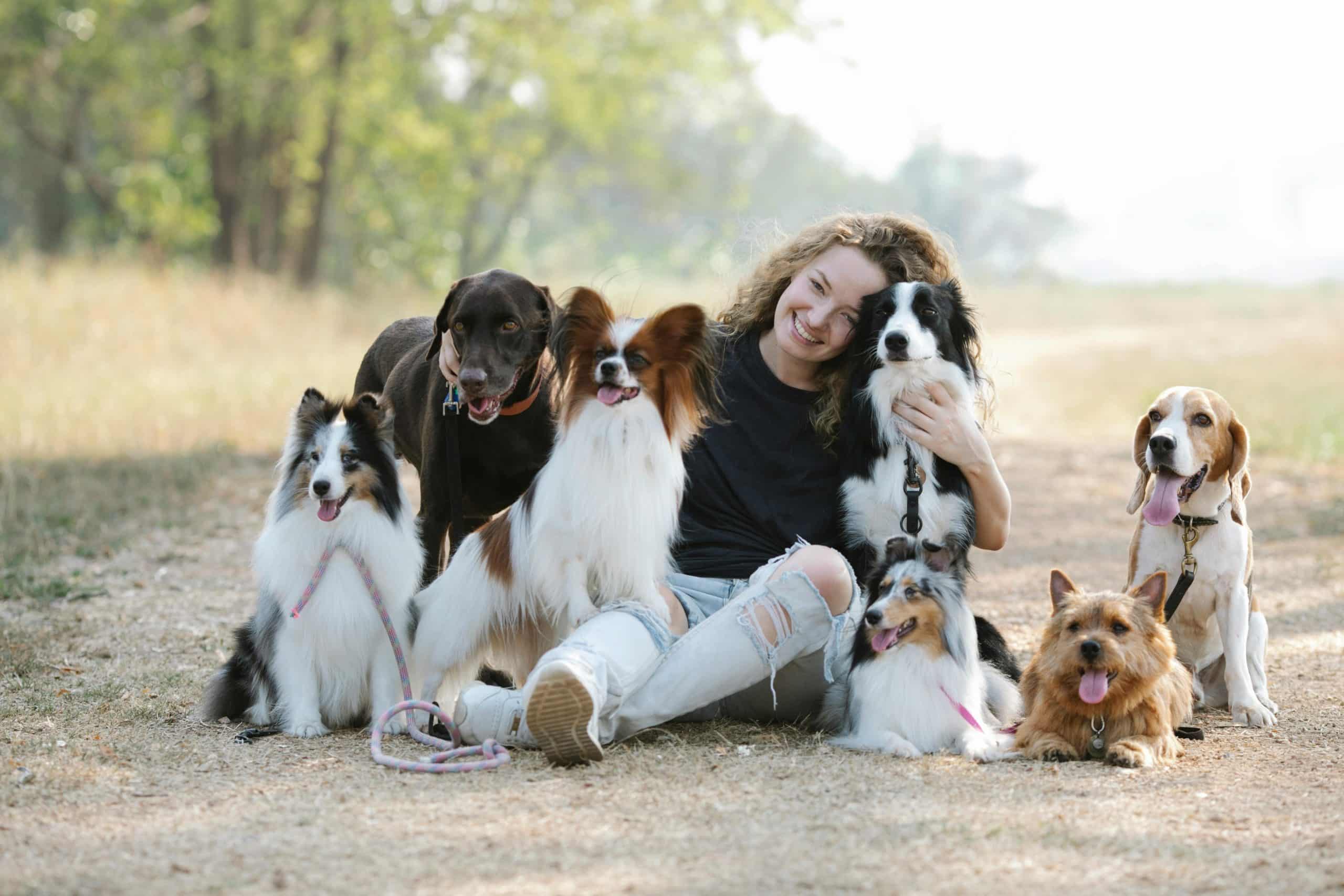A common saying goes, "You can’t teach an old dog new tricks," but when it comes to Old English Sheepdogs, this adage couldn’t be further from the truth. These intelligent and capable dogs are born with a natural instinct for herding. However, training them to effectively and safely herd livestock takes time, patience, and the correct approach. In this article, we will delve into the most effective methods to teach an Old English Sheepdog to herd livestock.
Understanding the Old English Sheepdog’s Natural Instincts
Before we plunge into training techniques, it’s crucial to understand the natural instincts of an Old English Sheepdog. Recognizing these instincts will enable us to utilize them effectively during the training process.
Cela peut vous intéresser : What Are the Best Practices for Keeping a Pet Tarantula in a Temperate Climate?
Old English Sheepdogs, often lovingly referred to as ‘Bobtails’, are herding dogs at heart. Their lineage can be traced back to the early 19th century, where they were used primarily for driving cattle and sheep to the market. They were recognized for their endurance, agility, and, most importantly, their instinctive ability to control and direct livestock.
These dogs are characterized by a strong work ethic, an inherent trait imprinted in their genes for centuries. They are intelligent and quick learners, which makes them adapt quickly to training. However, they are also known for their strong-willed nature. Therefore, it’s essential for the trainer to establish a clear leader-dog relationship from the early stages.
A lire également : How to Prepare a Balanced Raw Diet for a Siberian Husky with Allergies?
Building the Foundation: Basic Obedience Training
Before introducing your Old English Sheepdog to livestock, it’s essential to ensure they have a strong foundation in basic obedience training. An obedient dog is easier to control and will follow instructions more effectively when introduced to livestock, a crucial factor in herding.
Obedience training should start as early as possible, preferably when the dog is a puppy. Essential commands like ‘Sit’, ‘Stay’, ‘Come’, ‘Down’, and ‘Leave it’ should be taught first. Such commands are vital as they give you control over your dog, which is vital in a livestock environment where situations can quickly escalate.
Remember, Old English Sheepdogs thrive on consistency and positive reinforcement. Be consistent with your commands and reward positive behavior with treats, praise, or play. This positive reinforcement encourages the dog to repeat the behavior, aiding in faster learning.
Introduction to Livestock and Environment
Once your Old English Sheepdog has mastered basic obedience, it’s time to introduce them to the livestock and their new working environment. This step is crucial because it allows the dog to become familiar with the animals they will be herding and the environment they will be working in.
Start by taking your dog to the pasture on a leash. Allow them to observe the livestock from a distance. During this stage, ensure that your dog remains calm and composed. Any signs of over-excitement, fear, or aggression should be handled immediately with a firm ‘No’ followed by a redirection of their attention.
Gradually decrease the distance between your dog and the livestock, ensuring that your dog remains calm throughout the process. Remember, patience is key during this stage. Rushing this process could result in your dog developing fear or aggression towards the livestock, making the training process much more challenging.
The Art of Herding: Teaching Commands and Techniques
Teaching an Old English Sheepdog the art of herding involves training them to respond to specific commands and techniques. This stage of training is often best handled with the assistance of a professional herding trainer.
Commands used in herding are slightly different than those used in basic obedience training. Typical herding commands include ‘Away to Me’ (move counterclockwise around the livestock), ‘Come-Bye’ (move clockwise around the livestock), ‘Stand’ (stop moving but stay focused on the livestock), among others.
The herding process is essentially about controlling the movement of the livestock. The dog learns to move the livestock in the desired direction by using their body, eyes, and occasional barking. Remember, successful herding is about control and not about chasing the livestock. Therefore, it’s crucial to correct any chasing behavior immediately.
Continuous Training and Practice
Training an Old English Sheepdog to herd livestock is not a one-time process. It involves continuous training and practice. The more your dog practices, the better they will become at herding.
Regular practice sessions help reinforce the learned behaviors and commands. Remember, herding is a complex task that involves various skills. Therefore, it’s essential to practice different aspects of herding, such as directional control, distance control, and speed control, individually.
As the dog becomes more proficient, you can start introducing more complex tasks and commands. For instance, you can teach your dog to separate a specific animal from the herd or to herd the livestock through a specific path.
Training an Old English Sheepdog to herd livestock can indeed be a challenging task, but with patience, consistency, and the right training methods, it’s certainly attainable. Remember, the key to successful training lies in understanding and effectively leveraging the dog’s natural instincts and abilities.
Overcoming Common Challenges in Herding Training
When training an Old English Sheepdog to herd livestock, it’s common to encounter a few challenges or setbacks. It’s crucial to anticipate these challenges and have plans in place to address them effectively.
One of the most common challenges is the dog’s tendency to chase livestock instead of herding them. This behavior often stems from the dog’s prey drive, a natural instinct that can be misdirected towards herding animals. In such cases, it’s critical to redirect the behavior through corrective training methods. This could involve using a long lead to control the dog and prevent chasing, or introducing ‘Stop’ or ‘Wait’ commands to inhibit the chase instinct.
Another common issue is overworking. Old English Sheepdogs are highly energetic and can often work themselves into exhaustion. To prevent this, monitor your dog’s energy levels and ensure they have regular breaks during training sessions. Additionally, provide your dog with a balanced diet and plenty of water to maintain their energy and hydration levels.
Lastly, some dogs might exhibit fear or nervousness around livestock, particularly if they are not used to being around large animals. This can be overcome through gradual exposure and positive reinforcement. Encourage your dog and reward their bravery when they approach the livestock calmly and confidently.
Conclusion: Patience and Consistency are Key
In conclusion, training an Old English Sheepdog to herd livestock is a task that requires time, patience, and consistency. It involves understanding the dog’s natural instincts, building a solid foundation of basic obedience, gradually introducing the dog to livestock and the working environment, teaching them specific herding commands and techniques, and continuous training and practice.
Throughout the process, it’s important to maintain a positive and supportive attitude. Remember, your Old English Sheepdog is learning a complex task. There will be times when they excel, and there will be times when they struggle. Celebrate their successes, and when they face difficulties, instead of showing frustration, provide them with the help and support they need to overcome the challenge.
Training your Old English Sheepdog to herd livestock can be a wonderful bonding experience. It can build a strong and trusting relationship between you and your dog, and it can provide a fulfilling job for your dog that utilizes their natural instincts and abilities.
In the end, the sight of your Old English Sheepdog skillfully managing a herd of livestock can bring immense satisfaction, knowing that it’s a result of your dedicated effort, patience, and love. So take the time, commit to the process, and enjoy the journey of transforming your dog into an accomplished herding companion.











